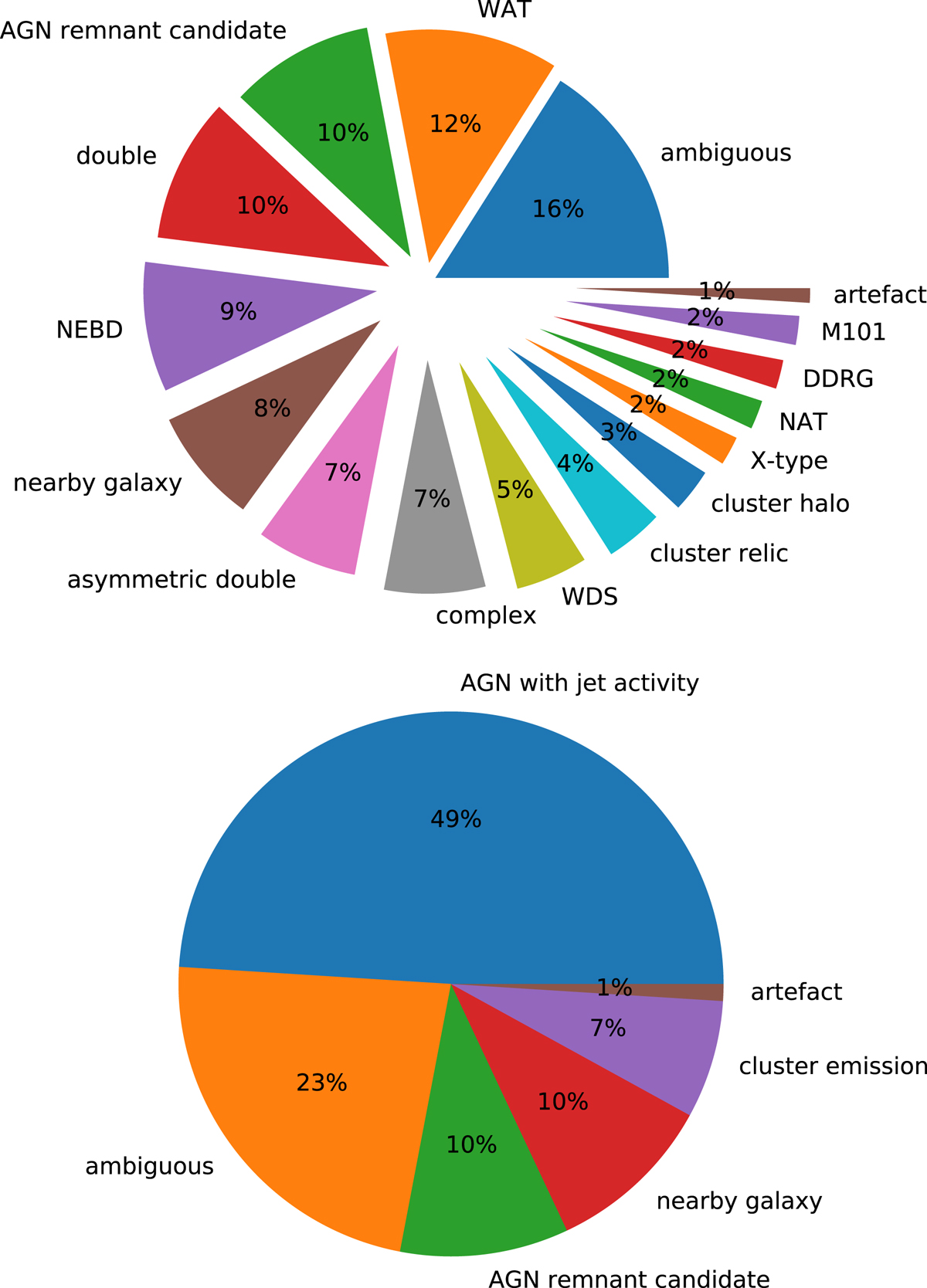Fig. 11.

Piechart showing the wide variety of morphologies and radio source types present in the 100 most outlying sources in the final 10 × 10 cyclic SOM. Top panel: descriptive labels have been established by a manual visual inspection of each source in radio (LoTSS), mid-infrared (WISE) and optical (SDSS9 colour). We labelled sources that fitted in more than one category as “ambiguous”. “X-type” sources are “X-shaped” extended doubles (Rees 1978), “WATs” and “NATs” are Wide Angle Tailed and Narrow Angle Tailed sources, “WDS” are Wide Double Sources, “NEBD” are Narrow Edge Brightened Doubles (Miley 1980), “DDRG” are Double-Double Radio Galaxies (Schoenmakers et al. 1999). An “AGN remnant candidate” is an extended double with such relaxed morphology that the AGN jets might not be active any more. As M101 is an exceptionally large apparent object, the source detection software did not group the separate detections of this nearby spiral, as a result it features multiple times in the catalogue. Bottom panel: we grouped subtypes together to get an overview of the dominant types of sources in the outliers: “M101” was grouped with “nearby galaxy”; “complex” with “ambiguous”; “cluster relic” and “cluster halo” were grouped into “cluster emission” and “DDRG”, “NEBD”, “NAT”, “WAT”, “WDS”, “double”, “asymmetric double” and “X-type” were grouped into “AGN with jet activity”. A figure containing each of these one hundred most outlying sources can be found in Appendix B.
Current usage metrics show cumulative count of Article Views (full-text article views including HTML views, PDF and ePub downloads, according to the available data) and Abstracts Views on Vision4Press platform.
Data correspond to usage on the plateform after 2015. The current usage metrics is available 48-96 hours after online publication and is updated daily on week days.
Initial download of the metrics may take a while.


